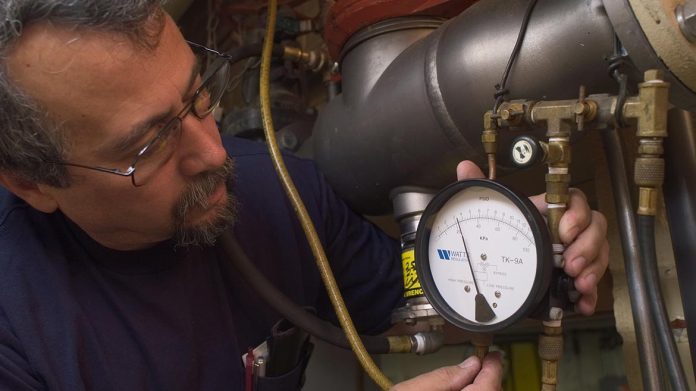Have you ever tested your backflow prevention device? If your backflow devices malfunction, your water supply and drinking water may contaminate your health. You need a professional like Discount Plumbing Rooter Inc. to help you test your backflow testing device.
Businesses should have backflow preventers, and once you have a backflow preventer installed, you must have it inspected yearly. You should know that not all backflow prevention is done using a device. An air gap between the pipe or hose holds liquid is usually sufficient. However, this is only sometimes possible, and many things may occur during a backflow preventer inspection. You may find out if you need a backflow prevention device, a new one, or if no further action is necessary.
Testing backflow is essential to prevent corrosion of plumbing and contamination of your drinking water. Learn more information about the preparations and processing that happen when professionals test backflow.
What is backflow, and how Do you prevent it?
Water used in most spaces, such as plumbing, irrigation systems, or fire protection, should only flow into the property in a single direction. A sudden pressure change can affect the main supply line, causing water to trickle back in. For example, the system may lose pressure if a sudden change occurs, such as a water main break or a nearby fire hydrant in use. The reduction in pressure in the pipeline no longer pushes water into the property in one direction. However, when water flows in the opposite direction, the water can contaminate the main water supply. Backflow is hazardous because it can contaminate public drinking water with impurities like fertilizers, pesticides, human waste, and toxic chemicals.
How is a Backflow Test Done?
The backflow test is performed to investigate if backflow particles are present in the current system to determine the cause to repair the issue. A certified Millbrae plumber will inspect the system’s pressure by attaching the backflow testing gauge, gate, and relief valves. The plumber will close the downstream valve, wait a few minutes before checking for changes in the pressure gauge’s direction, and simultaneously check for water leaks and other apparent signs by closing different valves.
For places with backflow preventers installed, your inspection will involve checking to ensure the devices are working correctly. Your plumber may use test hoses to determine pressure, and they take out your backflow prevention devices to ensure they haven’t worn down. Many moving parts in these devices are prone to wear and tear. If your plumber discovers an issue with the backflow preventer, they can replace some parts, but you may need to replace the entire setup.
During your backflow inspection, your plumber may find no problems – no signs that backflow isn’t being prevented in a particular area or that your prevention devices need maintenance. These inspections are mandatory, so it’s essential to have an annual inspection, even if you have newly installed devices and haven’t noticed any problems.
Types of backflow prevention devices
Regarding the equipment that will be checked, there are two options: a reduced pressure principle device or double-check valves. Both include a mechanical backflow preventer – a physical barrier to the backflow.
To prevent backflow siphonage, the reversal of a standard septic system flow, professionals should determine the pressure within your plumbing and see if it’s in danger of causing a problem like this.
What should you know?
When the backflow prevention device should be inspected annually, partner with a backflow-trained and licensed professional with experience in this area. When testing the device, a backflow-certified commercial plumbing service in Millbrae will turn off the downstream shut-off valve, wait a few minutes, and then test the system’s pressure by connecting test kit hoses.
The cost of inspecting your backflow preventer depends on your location and the plumbing companies you may choose from. Ensure contaminants from animal feces, pesticides, and fertilizers aren’t sneaking into your drinking water. It’s essential to choose a company with experienced, certified backflow professionals.
















